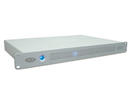'ZDNET Recommends': What exactly does it mean?
ZDNET's recommendations are based on many hours of testing, research, and comparison shopping. We gather data from the best available sources, including vendor and retailer listings as well as other relevant and independent reviews sites. And we pore over customer reviews to find out what matters to real people who already own and use the products and services we’re assessing.
When you click through from our site to a retailer and buy a product or service, we may earn affiliate commissions. This helps support our work, but does not affect what we cover or how, and it does not affect the price you pay. Neither ZDNET nor the author are compensated for these independent reviews. Indeed, we follow strict guidelines that ensure our editorial content is never influenced by advertisers.
ZDNET's editorial team writes on behalf of you, our reader. Our goal is to deliver the most accurate information and the most knowledgeable advice possible in order to help you make smarter buying decisions on tech gear and a wide array of products and services. Our editors thoroughly review and fact-check every article to ensure that our content meets the highest standards. If we have made an error or published misleading information, we will correct or clarify the article. If you see inaccuracies in our content, please report the mistake via this form.
LaCie Ethernet Disk


LaCie Ethernet Disk
pros and cons
- Good value;
- easy to set up;
- flexible;
- nicely designed
- Restricted expansion opportunities; USB 1.1 rather than 2.0; Unix support restricted to Samba
- Editors' review
- Specs
LaCie is best known for its external storage options, and the company recently expanded its portfolio to include a Network Attached Storage (NAS) range, the Ethernet Disk. Designed to run ‘headless’ in a rack, the Ethernet Disk can also serve as a PC if required. Its target is the small workgroup market, and this file and print server supports between 10 and 25 users. Several capacities are available, ranging from an entry-level 80GB (£329, ex. VAT, reviewed here) right up to 500GB (£999 ex. VAT). As NAS kit goes, the Ethernet Disk range carries relatively low price tags, and so offers good value for money.
First impressions do count, and as PC kit goes the Ethernet Disk cuts a dash with its pierced aluminium panel and blue LEDs on the front of the rack-mountable casing. Apart from the light-show, the only other device gracing the front panel is a power switch. The Ethernet Disk range comprises four models, each based on the same hardware: a 733MHz Pentium III processor with 128MB of RAM, plus a parallel port for a network printer, a VGA port, two PS/2 and two USB 1.1 ports. More usefully, it has a FireWire 400 port, which lets you add additional external storage to the system or maybe a tape backup unit. The system also has a spare PCI slot for an optional Gigabit Ethernet card.
The casing holds just one IDE hard disk and it’s not possible to add further storage internally. RAID is not an option either. However, LaCie envisages other Ethernet Disks being daisy-chained together, although this would really have to be achieved via the FireWire port and not the slow USB ports -- quite why LaCie didn’t install USB 2.0 supports beats us.
Shunning the more usual NAS OS of choice, Linux, the Ethernet Disk server is one of the first to use Windows XP Embedded. An embedded OS is one that’s been broken down to its component pieces, allowing developers to cherry pick the specific elements they need. But it’s still Windows XP underneath it all, and because the Ethernet Disk has mouse, keyboard and VGA ports, there’s nothing to stop you from using it as another desktop PC -- in fact, its lid is strong enough to take quite large monitors sitting on top of it. There’s only one small question-mark hanging over the use of Windows XP Embedded and that’s the security angle: let’s face it, Windows XP has shaped up to be one of the most patched operating systems Microsoft has released. Sure enough, updates are available from the LaCie Web site, and at the time of writing there was one 6MB patch to be applied -- a process that’s both straightforward and swift.
A simple tool is provided to help you locate the server. Beyond that, server management is conducted via an elegant Web-based front-end, although you can also control the appliance using Windows Remote Desktop. It took just a few minutes to get it up and running; adding users and setting up shares took a few minutes longer. There’s even a wizard to simplify this task -- this device is aimed at technically unsophisticated users. The Ethernet Disk supports Linux and Mac as well as Windows workgroups, up to a maximum of 25 users (although 10 is more realistic). On the Linux front, support is offered not via NFS, as you might expect, but SMB/Samba, so there are some caveats here. FTP access is also supported.